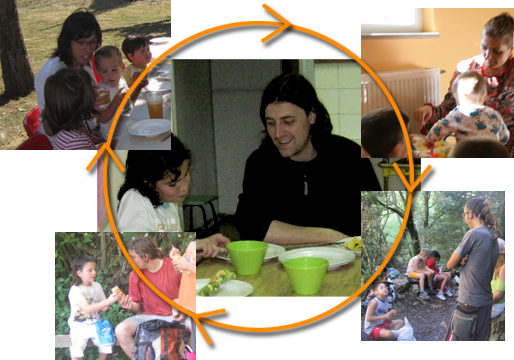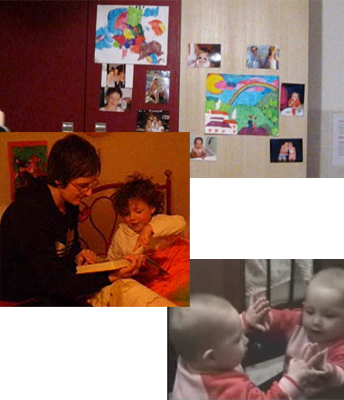THE PROFESSIONAL TASK: OFFERING LONG TERM SOCIAL RELATIONS
As a professional, it is important to allow children to form social bonds with caregivers and manage a personal relation in a professional way. Some caregivers become exhausted when involving emotionally with children, others avoid being personal at all in order to protect themselves. This is a difficult and necessary balance. The professional caregiver helps the child form a sense of attachment and – as described in session 3 – feels with the child, not like the child. The caregiver allows the child to make a personal bond while she keeps a professional view of the relation.
How can we offer stable placement with the same adult caregivers, and for as long as a child is with us?
How can we offer relations that promote the feeling of being secure and protected, and help children learn what a healthy child/ adult relation can be?

HOW TO PRACTICE THE SECURE BASE “FAMILY MODEL”
In order to offer children long term caregiver/ child relations, the way you organize work plans and schedules can be examined and designed or re-designed if necessary. In session 9 “The Secure Base Model” – you discussed how work shift plans can offer children stable caregivers during the daytime. Perhaps you may want to discuss this again at the end of this session. Or, perhaps you already made this framework for family like groups.
What is required to perform long term relations work?
Here are some suggestions and experiences from others which you can discuss after seeing them all. You may want your leader to join the discussion when you have made some suggestions for improvements. Please look at all the suggestions, and then pick the ones you think are most important as your project until next session. You can always go back and include more ideas for development:
A useful work model – especially in large institutions – is to divide the staff into groups so that certain staff persons form a daily work team. This team is responsible for performing the practical tasks and for working with the children’s social relations, the physical care and the attachment behaviour of a certain group of children. They are the “parenting team” with a group of children in their care for a long time.
The team is responsible for making a useful activity plan daily, weekly and monthly, for making observations of children, write reports for meetings and suggest what kind of placement the child may need after leaving the group. The team is responsible for promoting a strong sense of group identity and promote bonding between children and in child/ caregiver relations.
Small groups (8 children or less) offer room for intimacy and personal relations. Smaller groups are vulnerable if one member leaves. Large groups (9-xx children) offer more social variation, but less individual attention from a certain caregiver.
Babies and toddlers of course need the smallest groups and more caregivers for intimacy and care, but in general 6-8 children having 1-3 caregivers is a good group size for social purposes. How many staff members this requires depends on tasks and local conditions.
So, in an institution the child should basically live in a family group with 4-7 other children, and during the day the group may split up into different activities, or the whole group may sometimes be part of a larger assembly (f.ex. all groups meet for eating dinner together or for sports activities).
For example, 3 groups of 5-8 children may eat together or do sport activities together and then live separately at other times of the day. If some children have severe problems, they may be in the family group some of the time if it is too difficult for them to be in a large group. But all children should feel that the family group is their primary group, their secure base.
“We have created a chart on the wall and it worked very well. For each one of them we created a memory box. Photos, clip art papers, Shoes and so on. It is so much fun and sometimes, sad.”
Staff member’s statement
30 minutes
Please only discuss issues which you find necessary – you may already practice some of this:
- What is our present size for staff teams? What are the present responsibilities of the team in social relations with the children?
- Do we have a work plan that allows us to offer children the same caregivers in the daytime for long periods of time?
- How can we adjust the work plan to do this as much as possible?
- Are we ready to give specific teams the responsibility and the tasks described with a certain group of children? What should we work to do?
- Do we have a Primary Caregiver system? What can we work at to design and improve it?
- How can we (please look at the list) make the suggestions for supporting personal identity development a part of our daily routines?
- What problems will we probably encounter, and how can we foresee them?

 English
English








